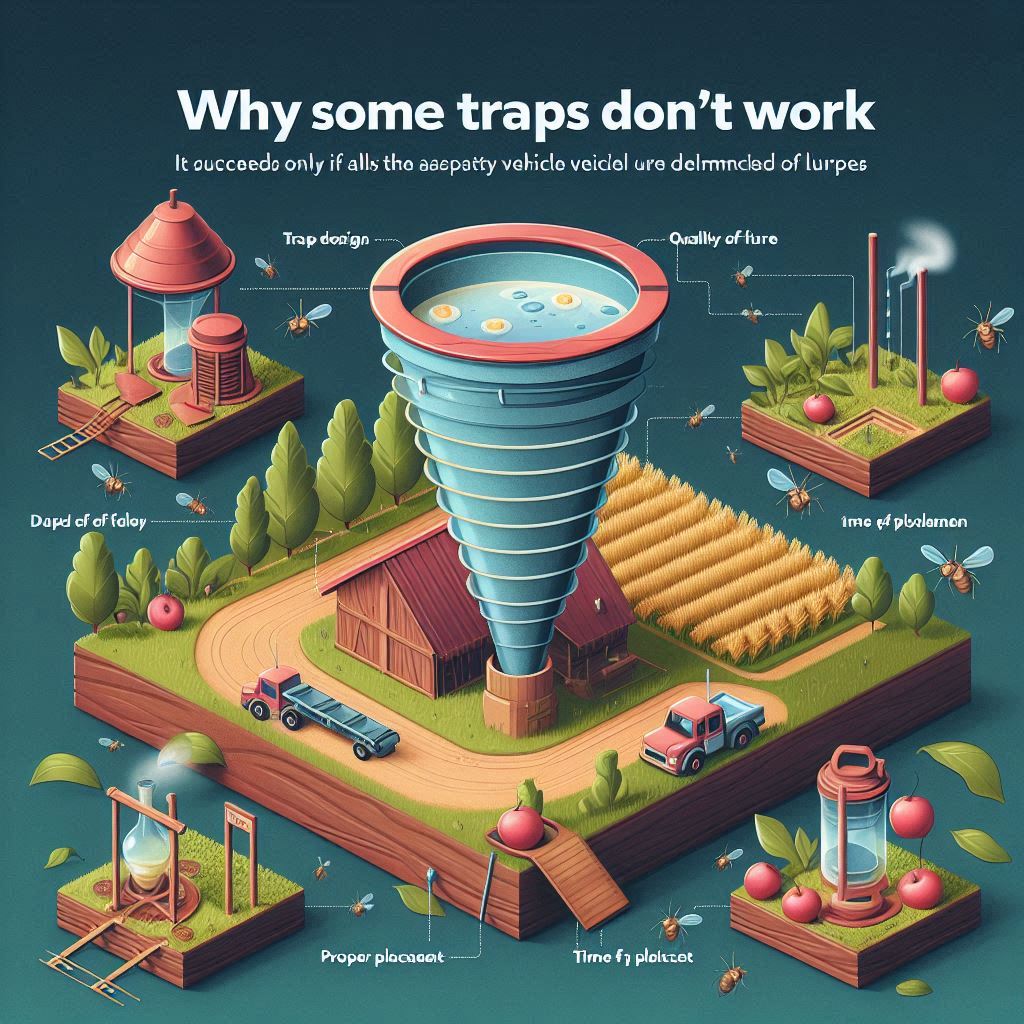
Insect traps are an essential tool for pest management, but not all traps are created equal. Many traps fail to perform effectively or do not last long enough to provide a good return on investment. This failure often comes down to three key aspects: design, color attraction, and material durability. Let’s explore these factors in detail to understand why traps fail and what makes a good trap last longer.
One of the most common reasons traps fail is because their design does not align with the flight dynamics and behavior of the target insect. Traps must be designed in a way that ensures easy entry but difficult exit for the insects.
If the trap does not facilitate the insect’s entry and prevent easy escape, its effectiveness drops significantly.
Color plays a crucial role in attracting insects to the trap. Different insects are attracted to different colors:
A trap with the wrong color reduces the chances of attracting the targeted insect, making it less effective even if the lure is strong.
Traps are exposed to sunlight, rain, wind, and other environmental factors. If the materials used are not suited for these conditions, the trap will degrade quickly, leading to breakage, loss of performance, and frequent replacement.
Lures (pheromones or attractants) are the core component of many traps. However, their effectiveness is compromised if they are exposed to direct sunlight or rain. A well-designed trap should have a covered lure chamber to protect from sunlight & rain water, which can degrade the active compounds.
If a trap does not have these protective features, the lure will degrade quickly, leading to poor performance and more frequent replacement of lures.
Traps fail due to poor design, inappropriate color selection, low-quality materials, and lack of lure protection. A well-engineered trap, designed specifically for the target insect, made from durable materials, and with proper housing for lures, can serve effectively for several years. While cheaper traps may seem economical upfront, they often fail prematurely, leading to higher long-term costs. Choosing the right trap ensures better pest control, reduced costs, and sustainable pest management for farmers and growers.
There was this interesting discussion I had with Mr Prateek
The teaser of Self Running Soil Revolution for an investment
The effectiveness of any microbial product depends not just on
Mitrasena (Army of friends) is global brand of Biowall Agrihealth Pvt Ltd. Mitrasena products & protocols enables seamless transition to non-toxic farming by concurrently offering Excellent Protection, Higher Productivity & Profit and, Ease of use.
We are a DIPP recognized Startup working for non-toxic crop protection. We are driven by a highly passionate and professionally competent team.
MitraSena © 2025 | All rights reserved | Innovatively Designed and Built by Social Mukul Media
Have any query about bulk orders? Get in touch with us.